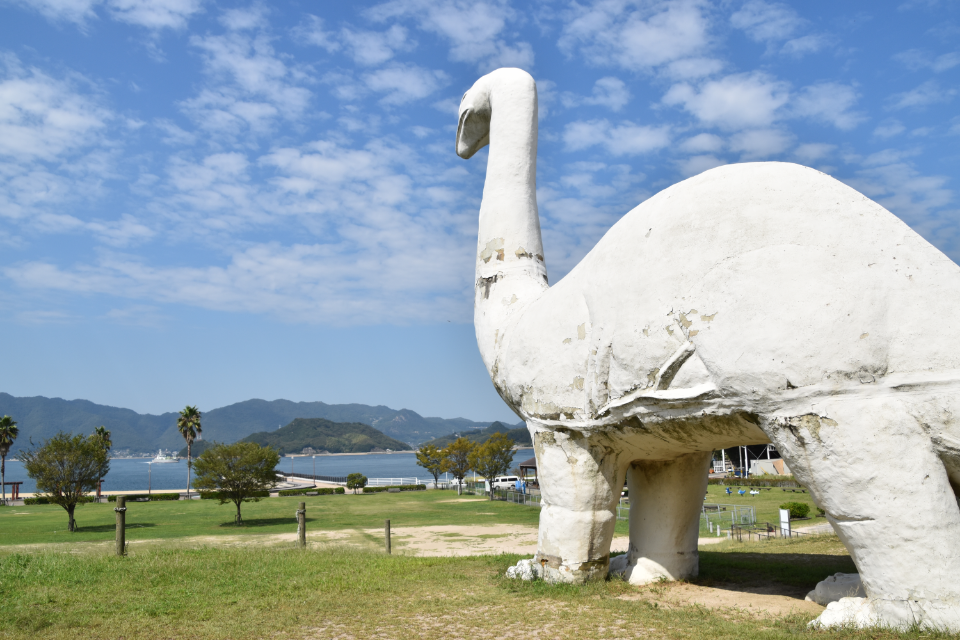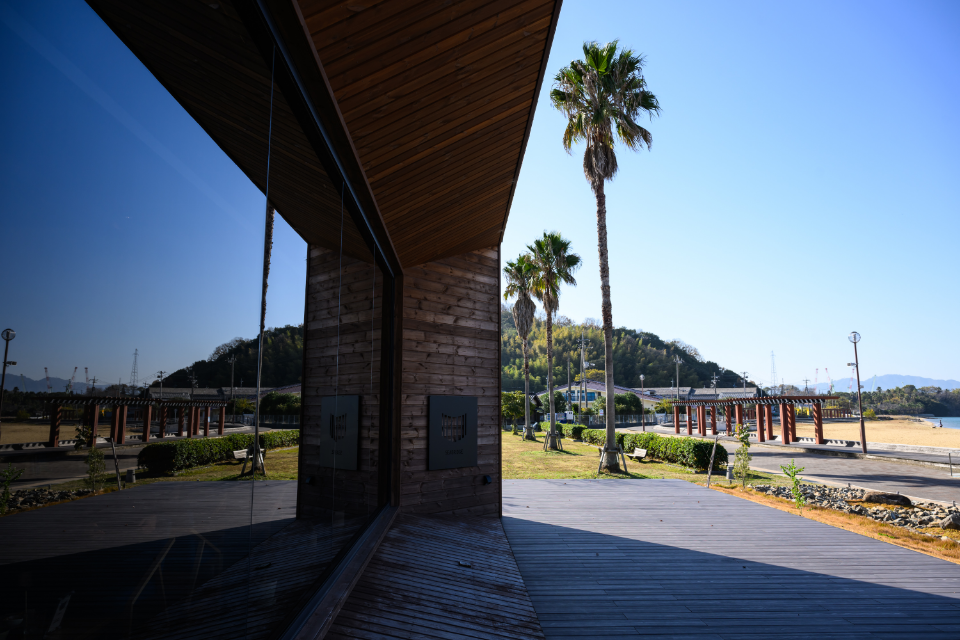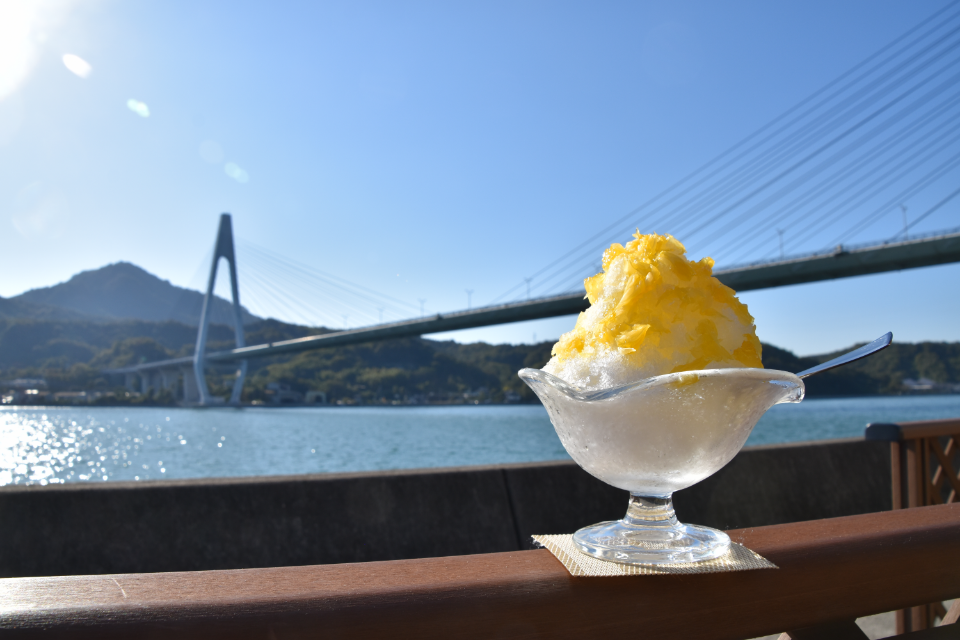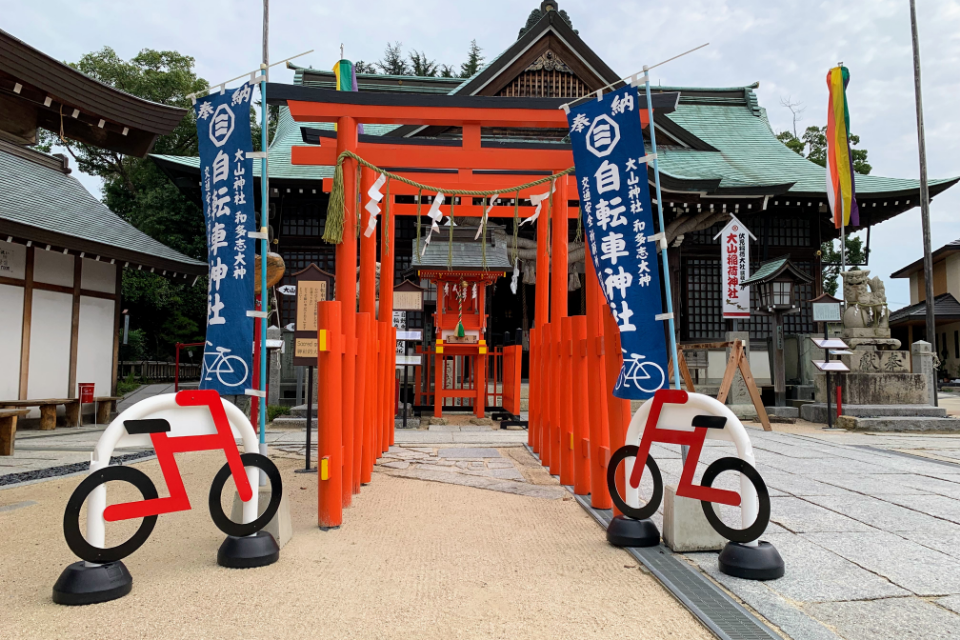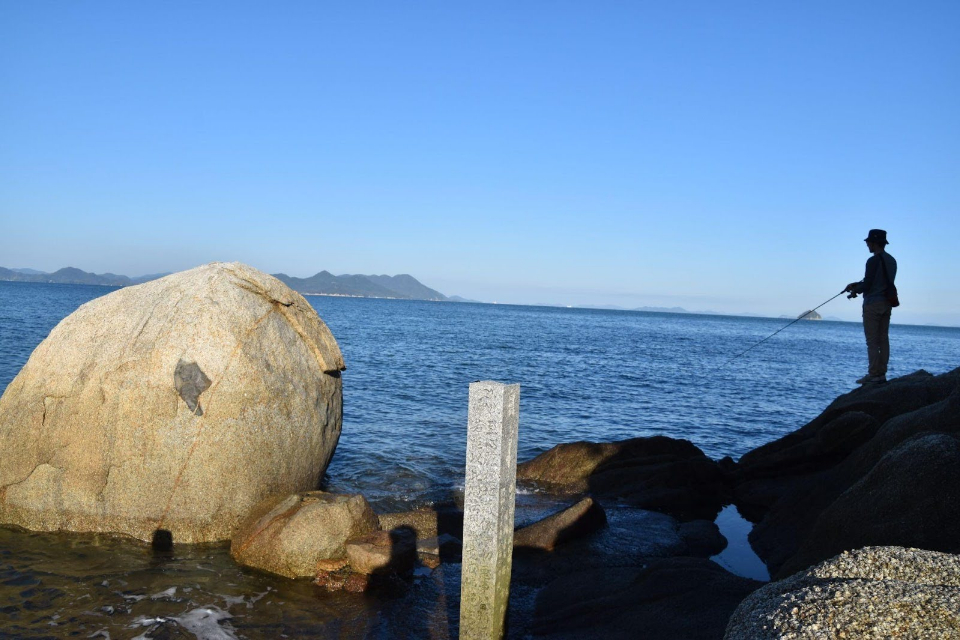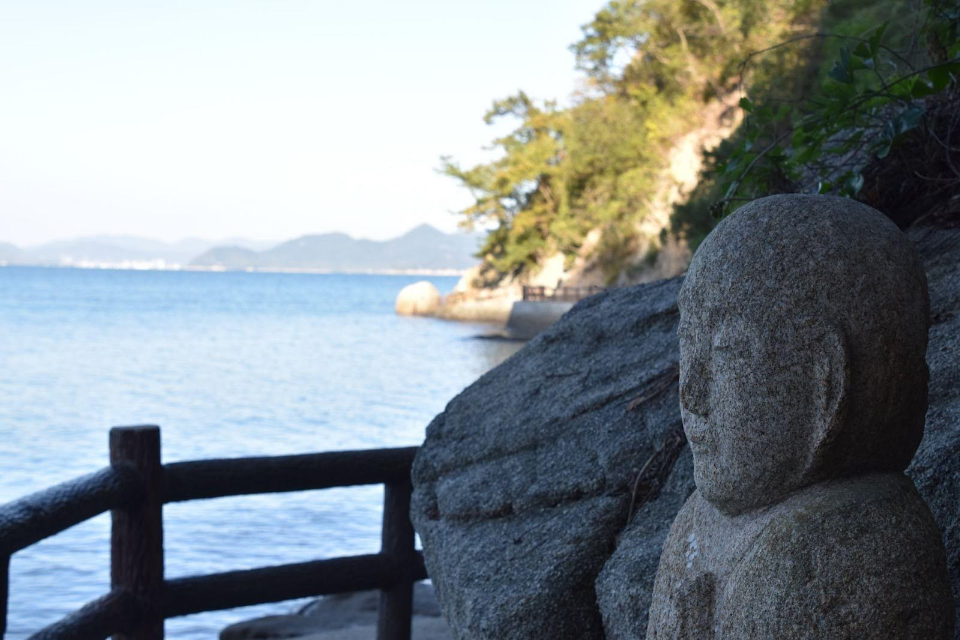
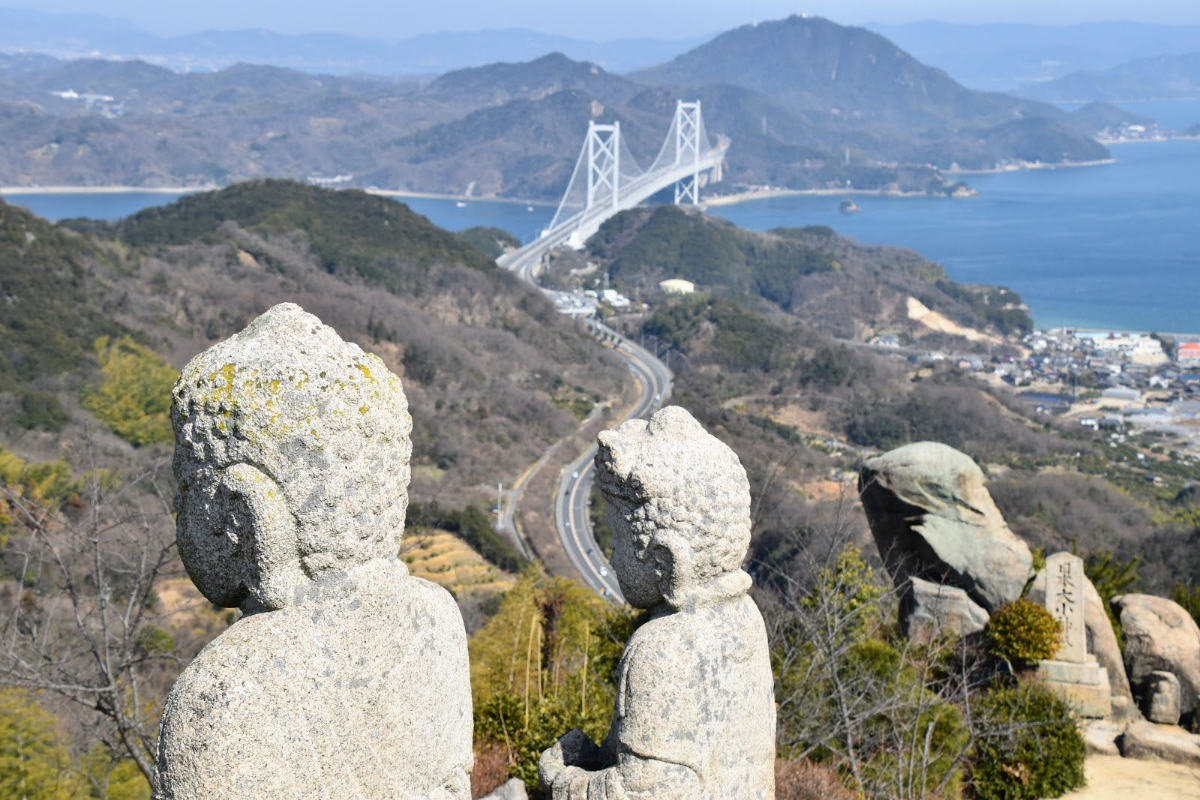
Innoshima Island, sitting between the islands of Mukaishima and Ikuchijima, offers interesting historical sights, one of Shinanami’s most spectacular views, a “bicycle shrine,” and tangy Hassaku citrus.
Innoshima (因島)
| Blue Line | Approx 9km |
|---|---|
| Cycle terminals | Innoshima Rental Cycle (Habu Port) |
| Circumference | Approx 32 km |
| Area | 35.04 ㎢ |
| Highest point | 390m |
| Population | Approx 21,000 |
Innoshima Along the Blue Line
The Innoshima Bridge drops you just above Innoshima Amenity Park – Shimanami Beach park area. A pleasant place to take a break, as well as lovely views and a cafe, there is a campground and a trail up to a lighthouse nearby. A small water park is also open here during summer. Plus, who doesn’t love an inexplicable giant dinosaur statue?
If you go into any shops on Innoshima you may come across images of Hassakun, a little chap dressed in a yellow bodysuit with a leaf sprouting from his hood. He is styled after the Hassaku citrus fruit which was developed here in the late 19th century. Hassaku-ya is a popular stop for visitors where they sell Hassaku Daifuku, delicious mochi cakes stuffed with the tangy fruit, and also has a great view of the Innoshima Bridge.
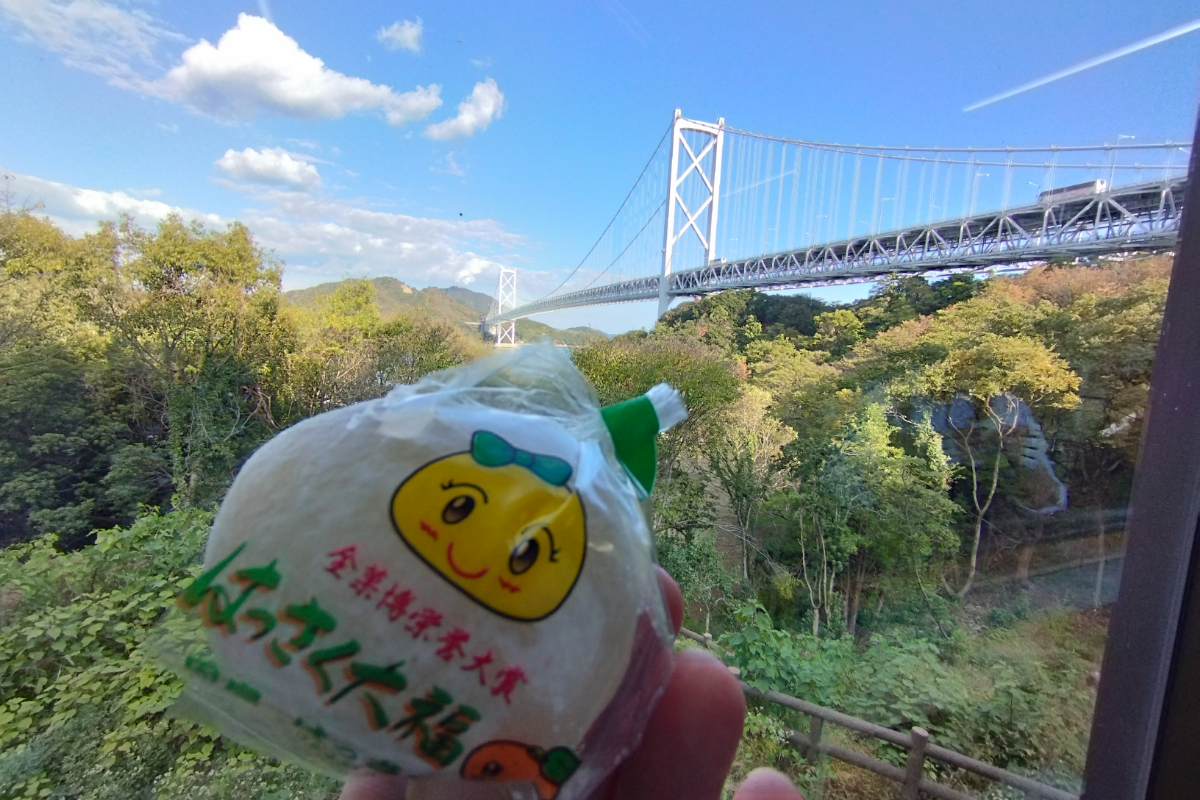
Talking of views, 226m Mt. Shirataki, on top of which is a temple decorated with around 700 Buddhist statues, has one of Shinanami’s most iconic.
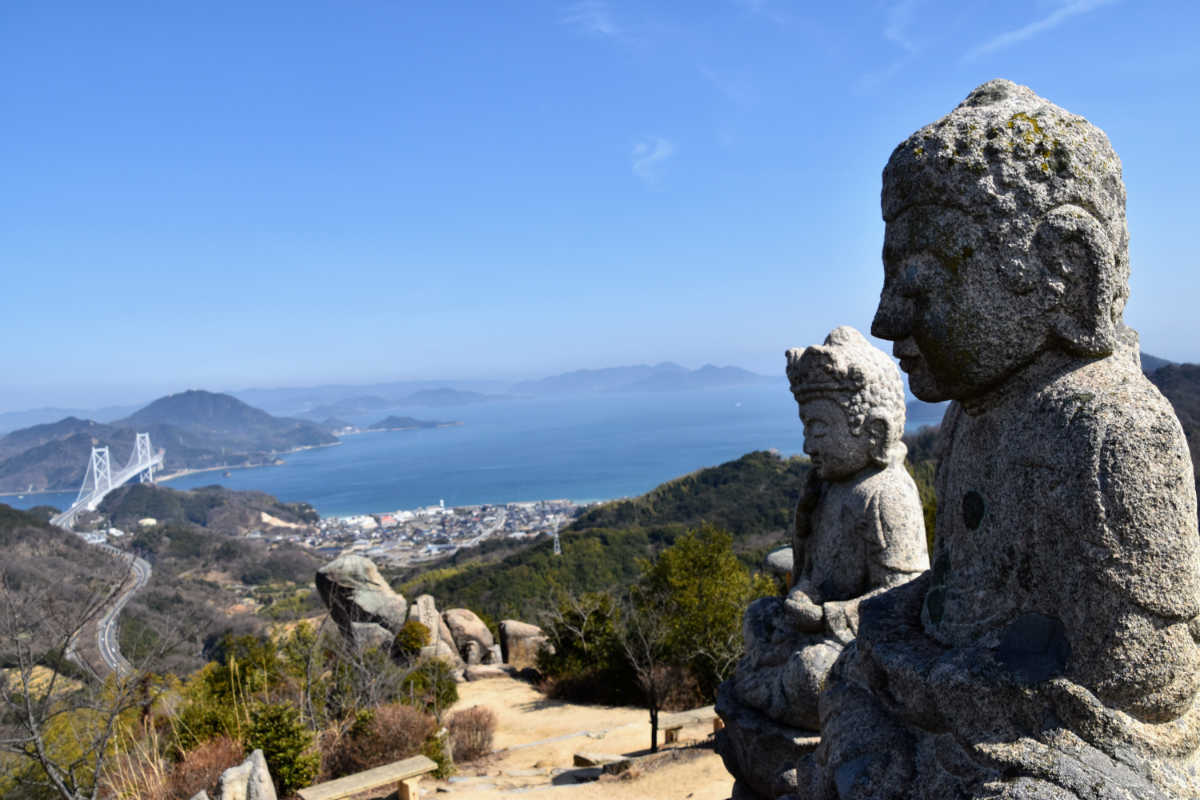
Be warned, however, that those without a car will have to work hard to enjoy it, as the 2.5km climb along the “Shirataki Flower Line” from the Innoshima Bridge entrance/exit is very steep. The good news is that you can cruise down the other side of the mountain and rejoin the Blue Line.
Returning to Innoshima Amenity Park, the Blue Line continues from here around Innoshima’s northwest coast all the way to the next bridge crossing, the Ikuchi Bridge to Ikuchi Island. Look out for Hakko Park, dedicated to all things fermentation, along the way.
Innoshima Beyond the Blue Line
The temple on the aforementioned Mt. Shirataki is said to have been built by members of the Innoshima branch of the Murakami Suigun maritime clan. Every year, at the end of June and August, this history is celebrated with spectacular festivals held on Shimanami Beach.
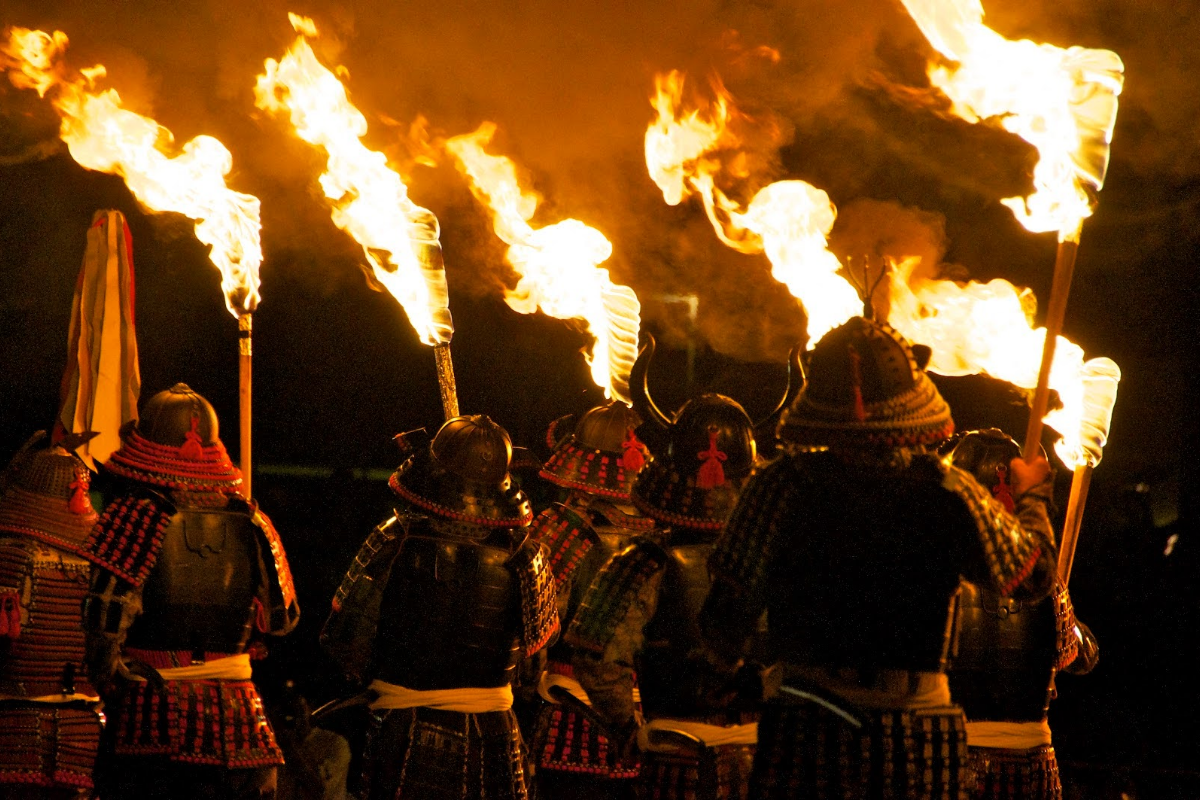
In the center of the island is the Innoshima Suigun Castle, a museum housed in a rather fancifully reimagined hilltop castle. The graves of many clan members are located behind their family temple nearby.
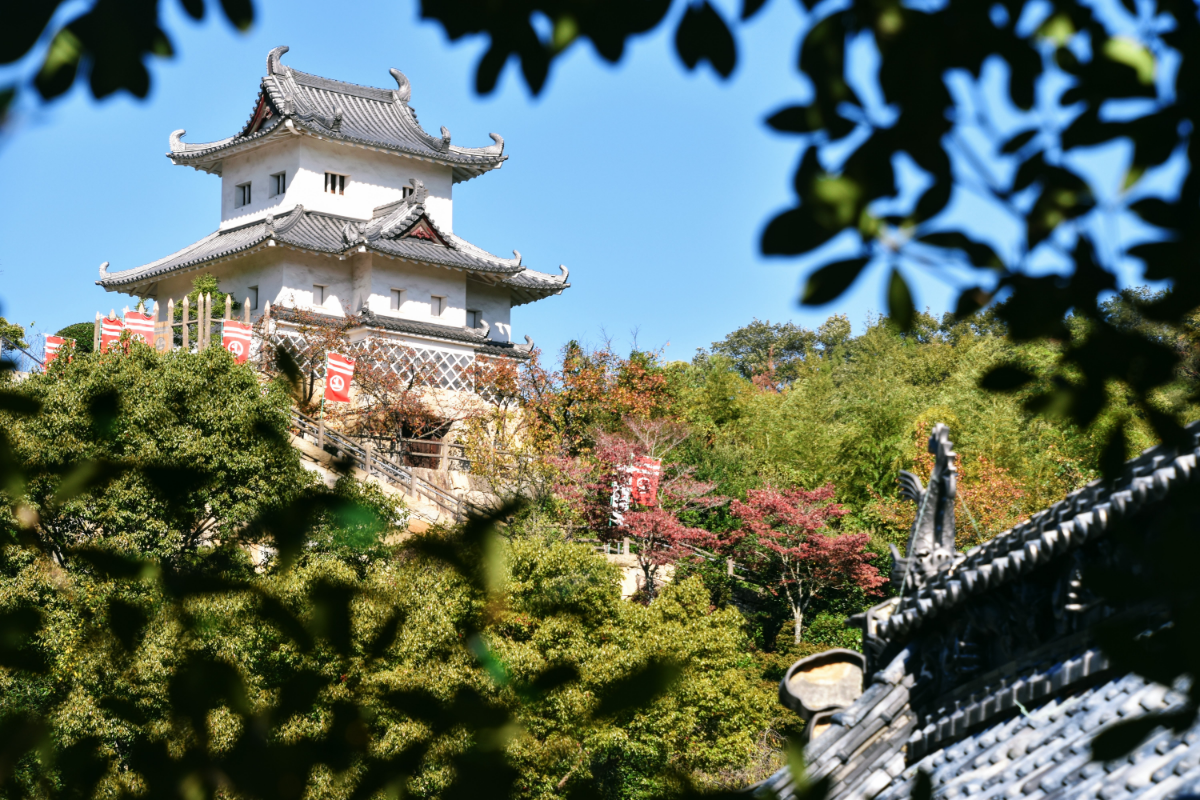
Just south of the Ikuchi Bridge are two cafes (Cafe Shonan and Nanohana), one on each side of opposite the road which cater to cyclists and visitors. A little further takes you to Oyama Shrine, which, as well as housing a shrine to the god of good hearing, offers bicycle blessings and sells road safety amulets aimed at cyclists.
Innoshima boomed at beginning of the 20th century as a center of
shipbuilding. The town around the port of Habu used to provide accommodation, sustenance and entertainment to the thousands of ship workers. The narrow back streets are now quiet, but it is still a good place to sample ‘in-oko’, Innoshima’s version of Hiroshima’s signature okonomiyaki layered pancake.
Ferries leave from Habu for the islands of Iwagi and Ikina, and the Shimanami Kaido’s little sister, the Yumeshima Kaido bike route.
In the far southeast corner of the island is a picturesque spot with a sad legend attached to it. Jizobana is a large rock with a carving of an image of the Buddhavista Jizo facing out to sea which can be viewed at low tide. The story goes that a young woman was captured trying to evade a checkpoint in an attempt to travel to the capital where she wished to study playing the koto. When she refused an offer of marriage from the local Suigun lord in return for leniency, he had her cut down on the beach. Haunted by the sound of the koto in the nights that followed he had the rock engraved in an attempt to assuage her spirit.
Anyone aiming to complete a full loop of Innoshima, will have to take the ‘Suigun Line’ along the island’s east coast, north of Jizobana. It offers great views, but it is one of Shimanami’s more challenging coastal roads.

